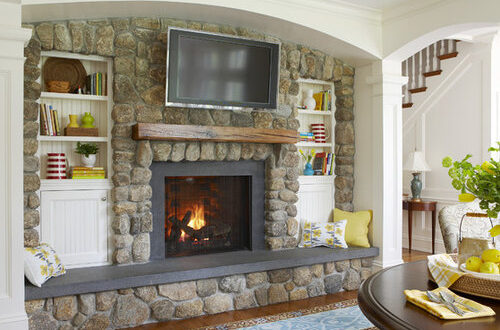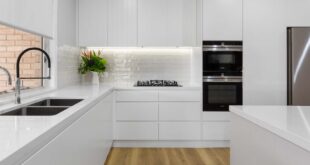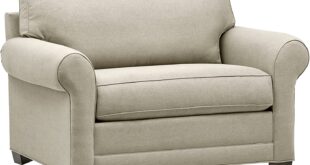body { font-family: Arial, sans-serif; line-height: 1.6; }
h2 { color: #333; margin-top: 2em; }
h3 { color: #666; margin-top: 1.5em; }
p { margin-bottom: 1em; }
ul { margin-left: 2em; }
li { margin-bottom: 0.5em; }
img { max-width: 100%; height: auto; }
The Enduring Appeal of Built-In Benches in Living Rooms
The living room, often the heart of the home, is a space designed for relaxation, entertainment, and connection. It’s where we unwind after a long day, gather with loved ones, and create lasting memories. As such, the design and functionality of this space are paramount. One design element that has consistently proven its worth in both aesthetics and practicality is the built-in bench.
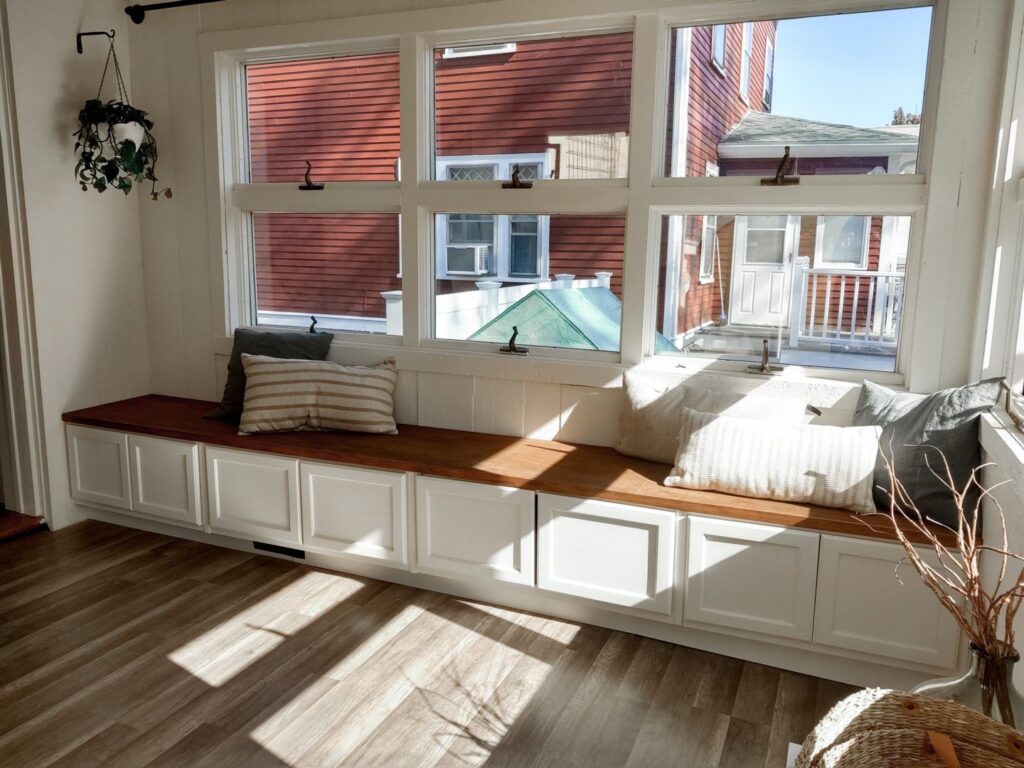
Built-in benches are more than just seating; they’re architectural features that can transform a living room into a haven of comfort and style. Unlike freestanding furniture, they seamlessly integrate into the room’s structure, creating a cohesive and intentional design. Their versatility extends beyond mere seating, offering opportunities for storage, visual interest, and a sense of spaciousness. But why have built-in benches become so popular, and how can you incorporate them into your own living room design?
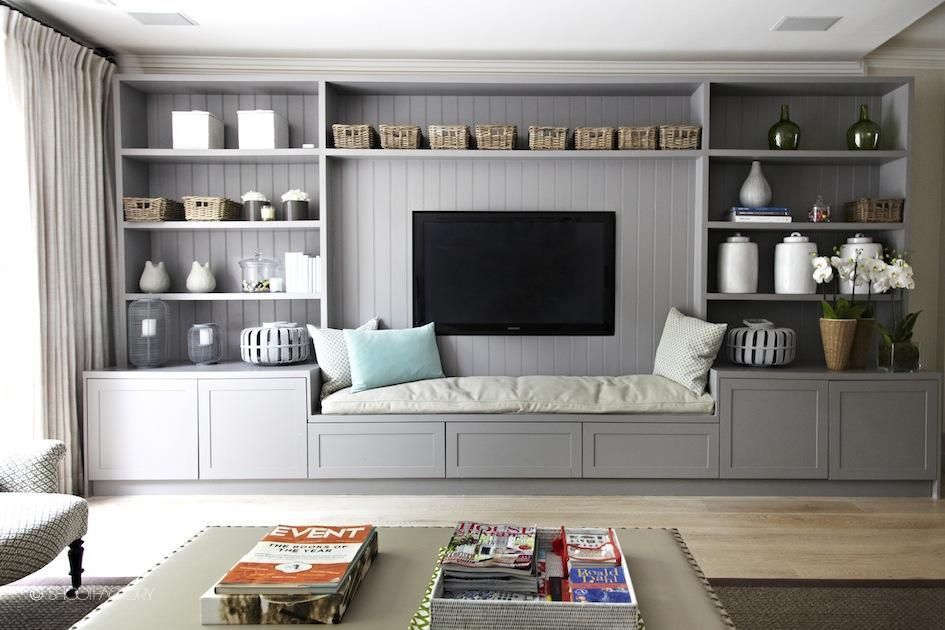
Benefits of Incorporating a Built-In Bench
The advantages of a built-in bench are numerous, making it a worthwhile investment for any homeowner looking to elevate their living space.
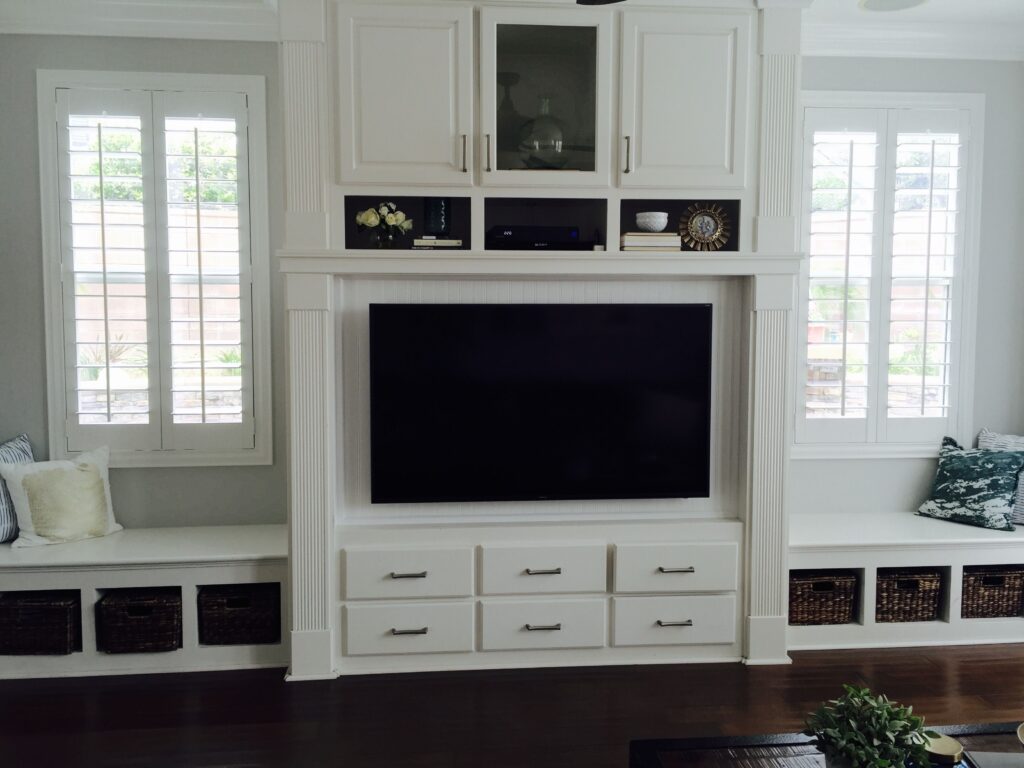
Maximizing Space and Functionality
In smaller living rooms, space is a precious commodity. Built-in benches are masters of spatial efficiency. They utilize what would otherwise be wasted space, such as alcoves, corners, or areas beneath windows, transforming them into functional seating areas. Moreover, many built-in bench designs incorporate hidden storage compartments, perfect for stashing away blankets, pillows, toys, or even books. This dual functionality is a game-changer for maintaining a clutter-free and organized living environment.
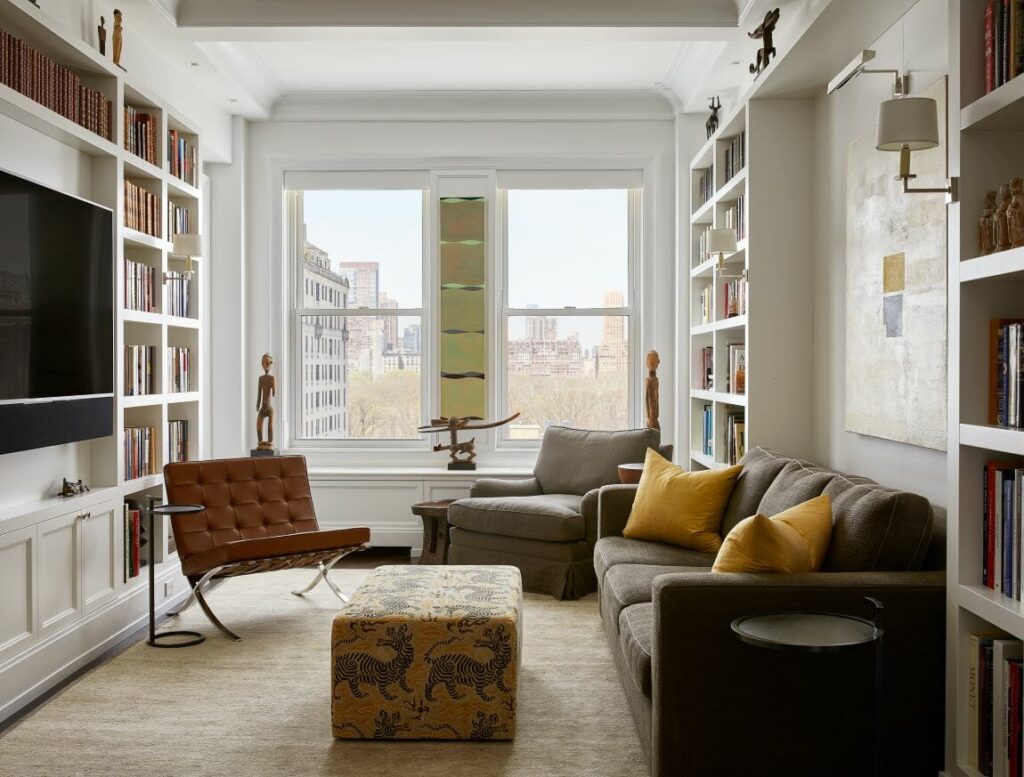
Creating a Cohesive and Integrated Design
Unlike standalone sofas or chairs, built-in benches are inherently integrated into the room’s architecture. They become a part of the wall, the window frame, or the overall structure, creating a sense of continuity and flow. This seamless integration contributes to a more harmonious and visually appealing design. By choosing materials, colors, and finishes that complement the existing décor, you can ensure that the built-in bench blends effortlessly into the overall aesthetic.
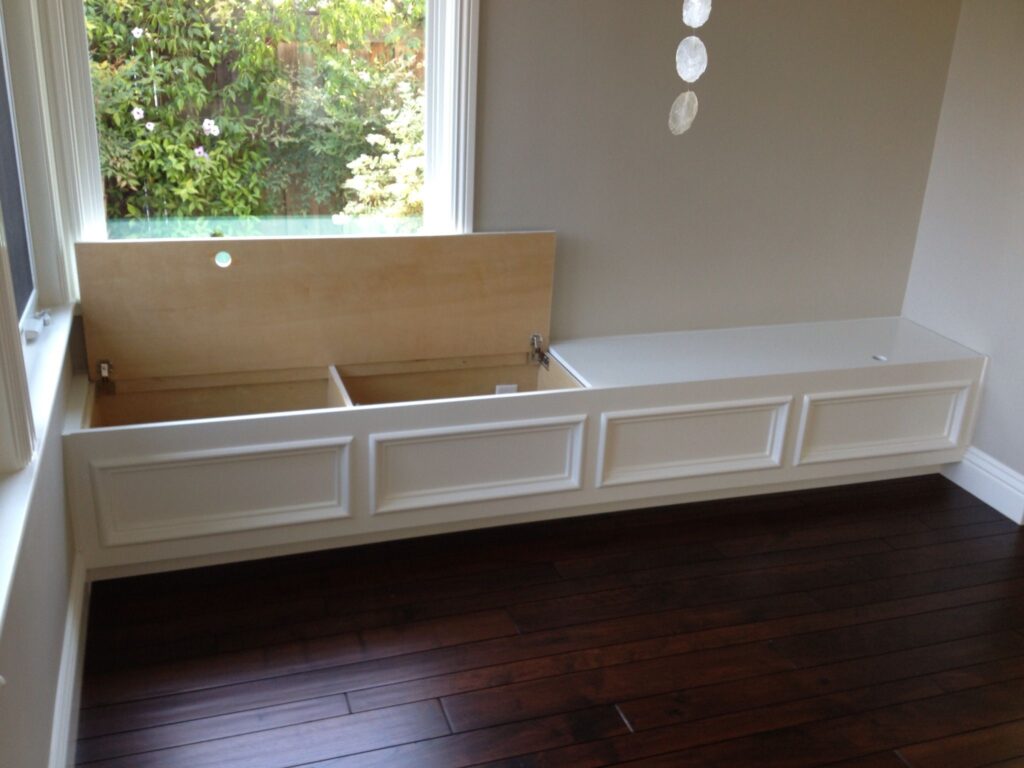
Adding Character and Architectural Interest
A well-designed built-in bench can serve as a focal point in the living room, adding character and architectural interest. Whether you opt for a minimalist, modern design or a more ornate, traditional style, the bench can become a statement piece that reflects your personal taste and enhances the room’s overall ambiance. Consider incorporating unique details, such as custom millwork, decorative cushions, or eye-catching upholstery, to further personalize the bench and make it truly your own.
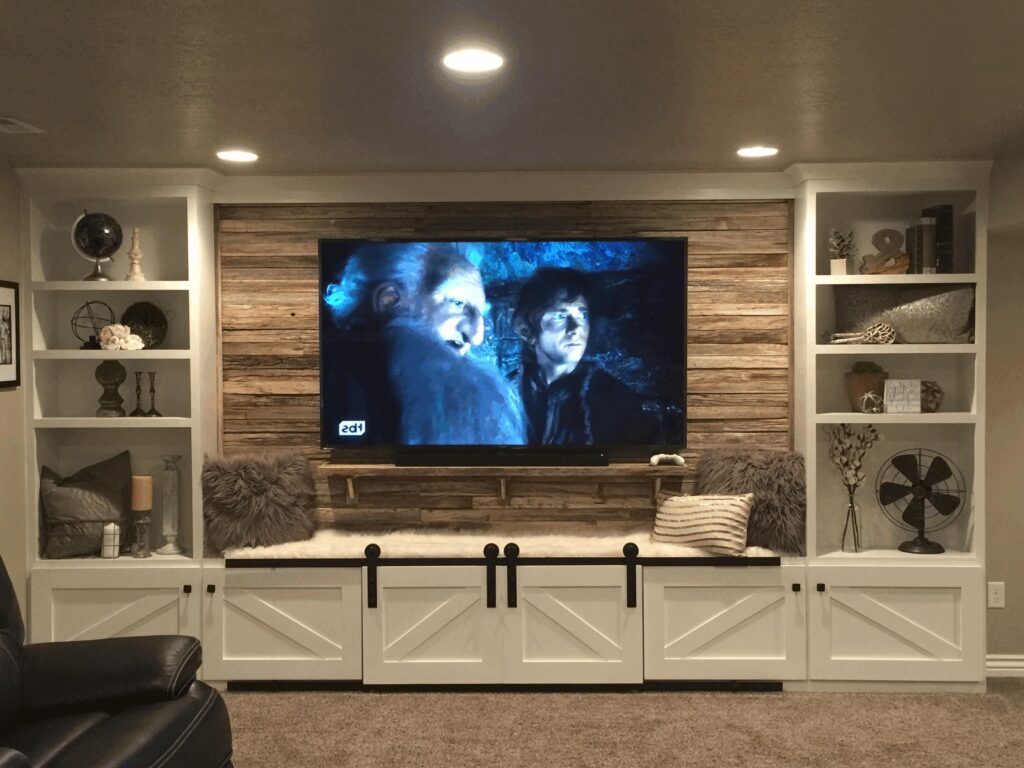
Enhancing Comfort and Relaxation
Beyond its aesthetic and functional benefits, a built-in bench can also significantly enhance comfort and relaxation. Unlike stiff, formal sofas, built-in benches often offer a more relaxed and inviting seating experience. By adding plush cushions, soft throws, and supportive backrests, you can create a cozy nook that beckons you to unwind and de-stress. Imagine curling up with a good book on a sunny afternoon, or enjoying a warm cup of tea while gazing out the window – a built-in bench makes these moments even more special.
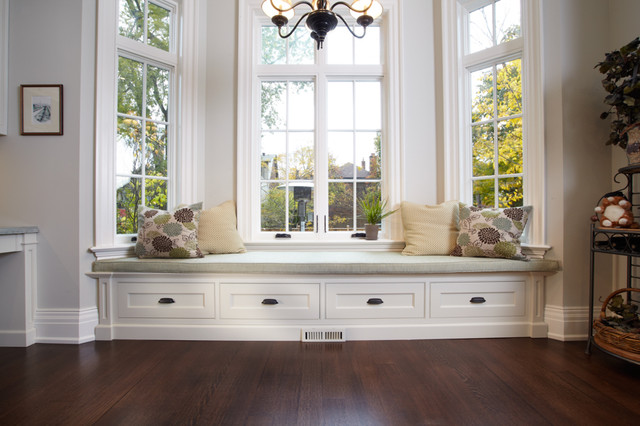
Types of Built-In Benches for Living Rooms
The beauty of built-in benches lies in their versatility. They can be customized to suit a wide range of design styles and functional needs. Here are some popular types of built-in benches to consider for your living room:
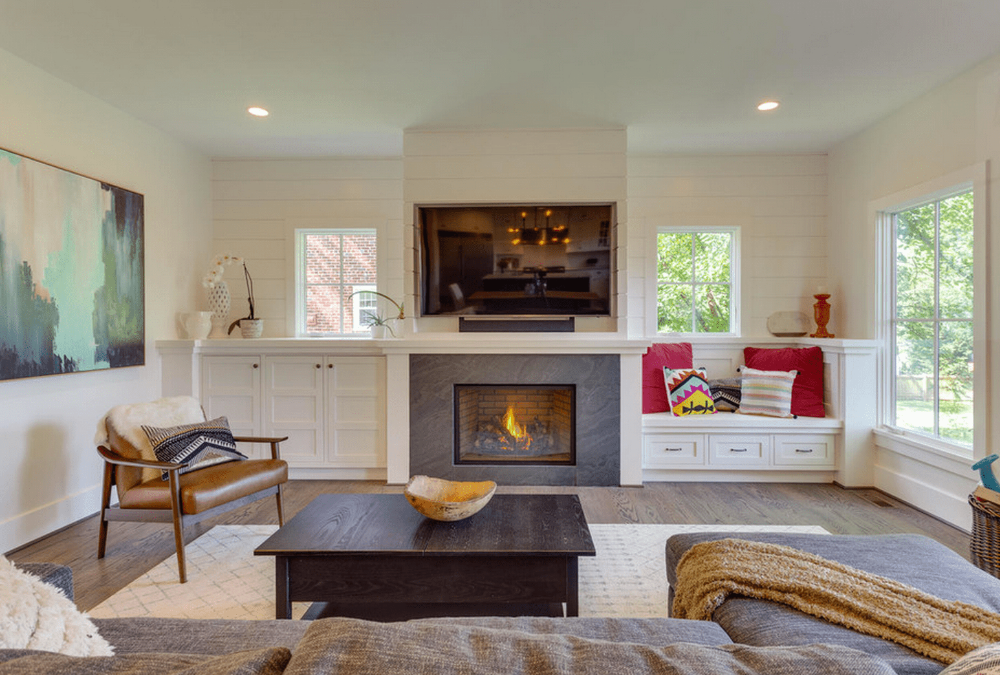
Window Seats
Window seats are perhaps the most classic and beloved type of built-in bench. They are typically positioned beneath windows, offering a comfortable spot to enjoy natural light and scenic views. Window seats can be simple and minimalist, or more elaborate with built-in storage and decorative details. They are particularly well-suited for reading nooks, meditation areas, or simply a place to relax and observe the world outside.
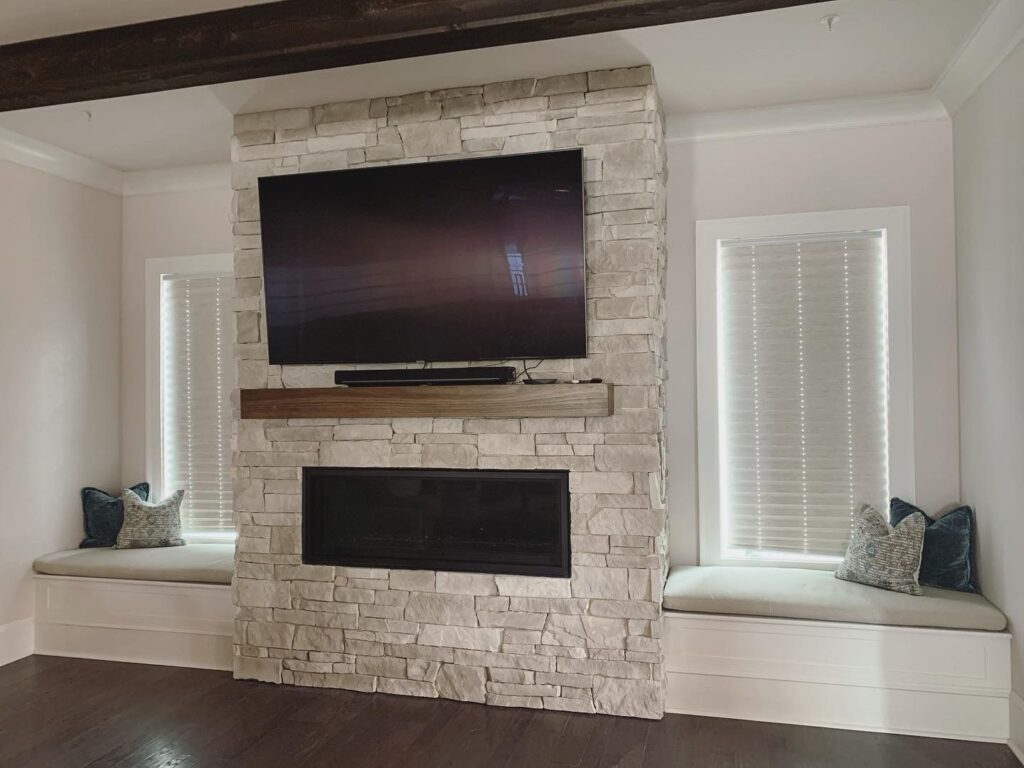
Corner Benches
Corner benches are ideal for maximizing space in smaller living rooms. They utilize often-underutilized corner areas, transforming them into functional seating zones. Corner benches can be L-shaped or U-shaped, depending on the room’s configuration. They are perfect for creating cozy conversation areas or casual dining spaces.
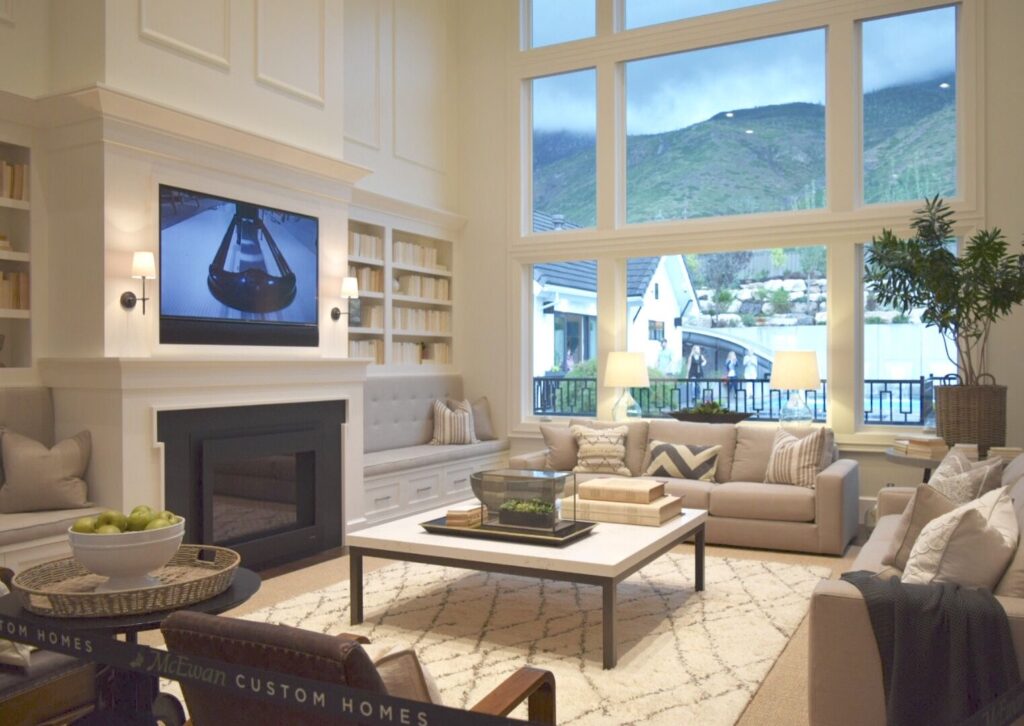
Alcove Benches
Alcove benches are designed to fit snugly into existing alcoves or recesses in the wall. These alcoves can be natural architectural features or created intentionally during a renovation. Alcove benches offer a sense of privacy and enclosure, making them ideal for creating reading nooks or quiet relaxation areas.
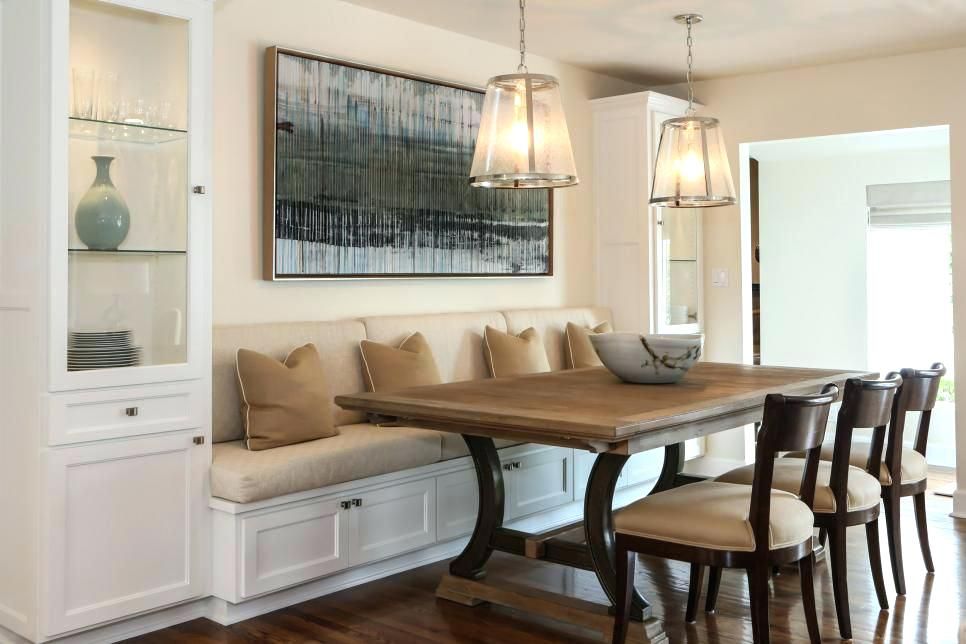
Storage Benches
Storage benches are the ultimate in functionality. They combine comfortable seating with ample storage space, making them perfect for organizing clutter and keeping the living room tidy. Storage benches can feature lift-up seats, drawers, or a combination of both. They are particularly useful for storing blankets, pillows, toys, games, or even seasonal decorations.
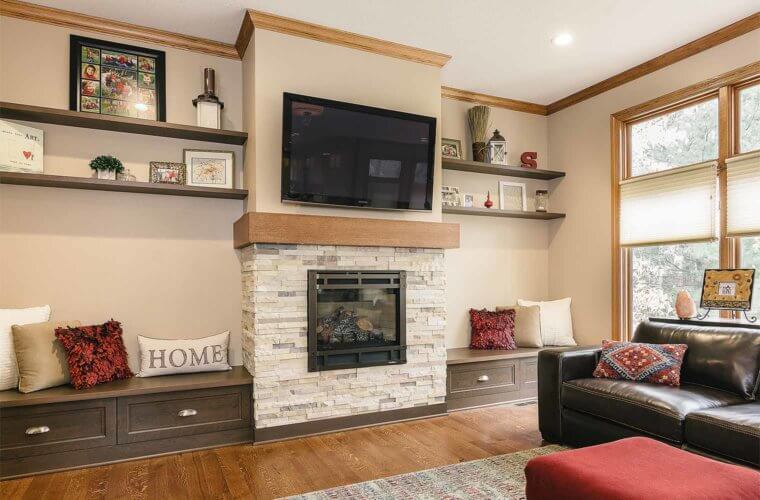
Floating Benches
Floating benches are a more modern and minimalist option. They are mounted directly to the wall, creating a sense of lightness and airiness. Floating benches are perfect for contemporary living rooms with a clean and uncluttered aesthetic. They can be particularly effective in smaller spaces, as they create the illusion of more floor space.
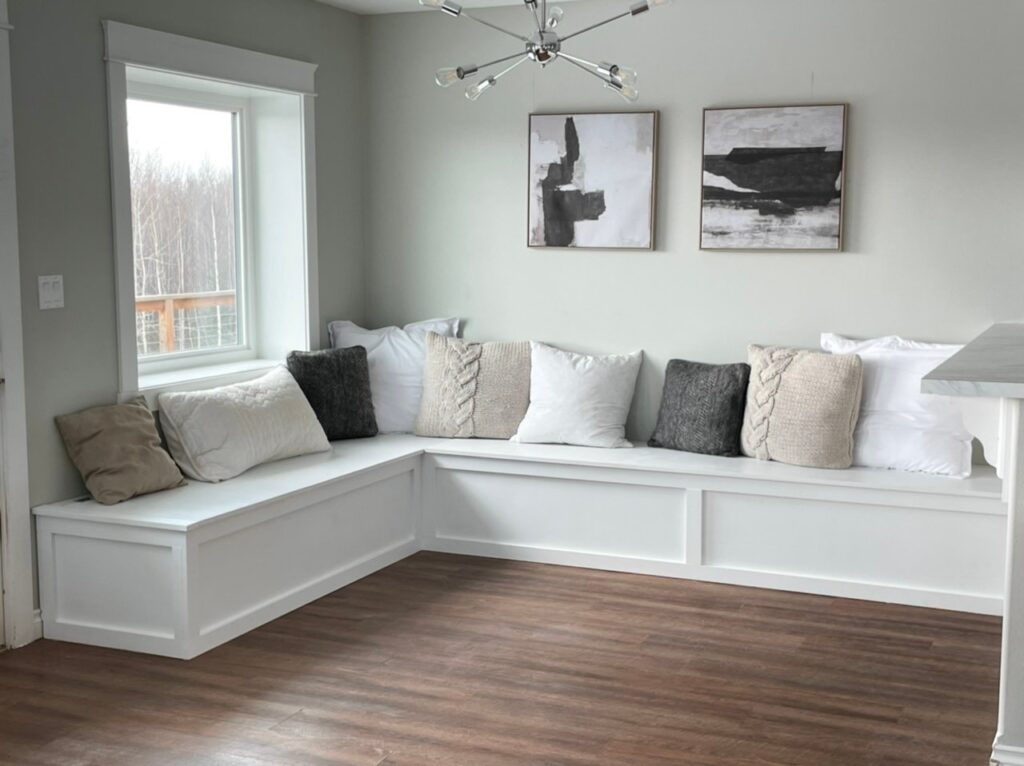
Design Considerations for Your Built-In Bench
Before embarking on a built-in bench project, it’s essential to consider several key design factors to ensure that the final result is both aesthetically pleasing and functionally sound.
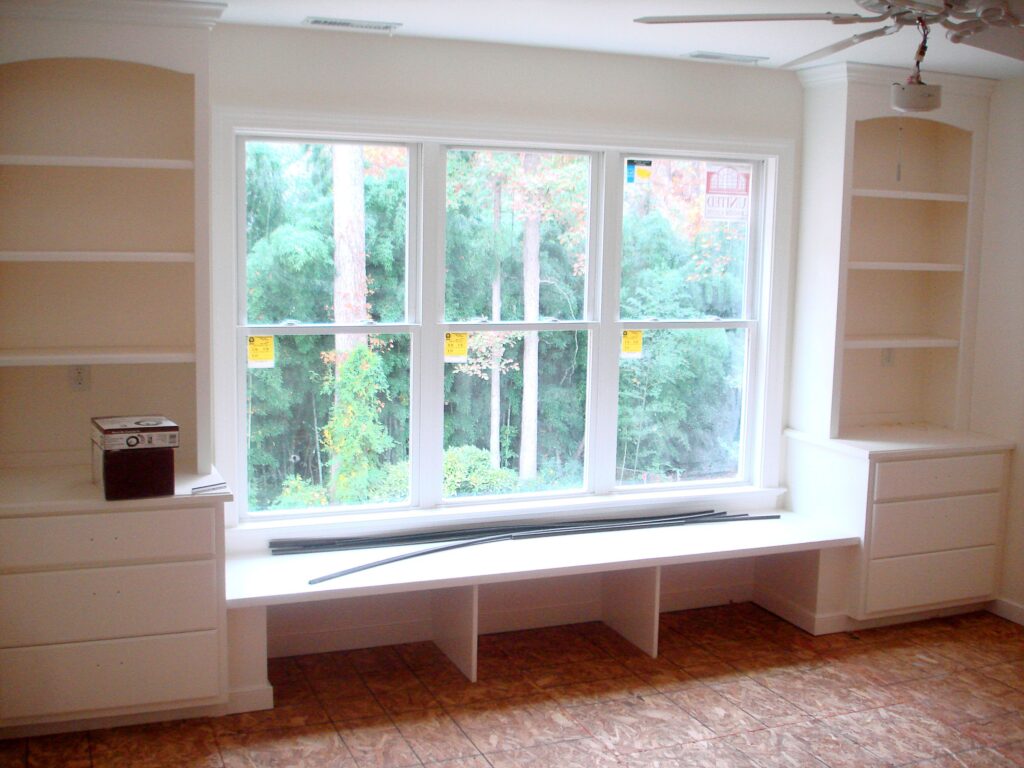
Size and Dimensions
The size and dimensions of your built-in bench should be carefully considered in relation to the overall size and layout of the living room. A bench that is too large can overwhelm the space, while a bench that is too small may look insignificant. Consider the intended use of the bench and the number of people you want it to accommodate. Measure the available space accurately and plan the dimensions of the bench accordingly.
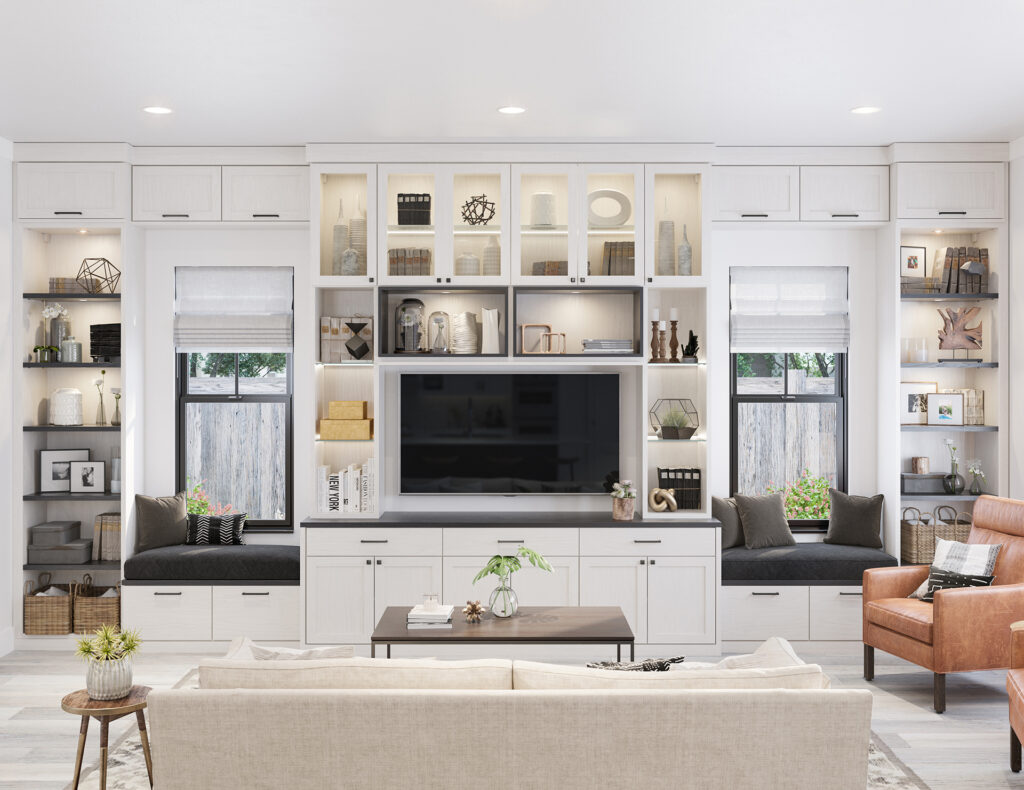
Material Selection
The choice of materials will significantly impact the look and feel of your built-in bench. Common materials include wood, plywood, MDF (medium-density fiberboard), and upholstery fabrics. Wood offers a natural and timeless aesthetic, while plywood and MDF are more affordable and versatile. Upholstery fabrics can add color, texture, and comfort. Choose materials that complement the existing décor and are durable enough to withstand everyday wear and tear.
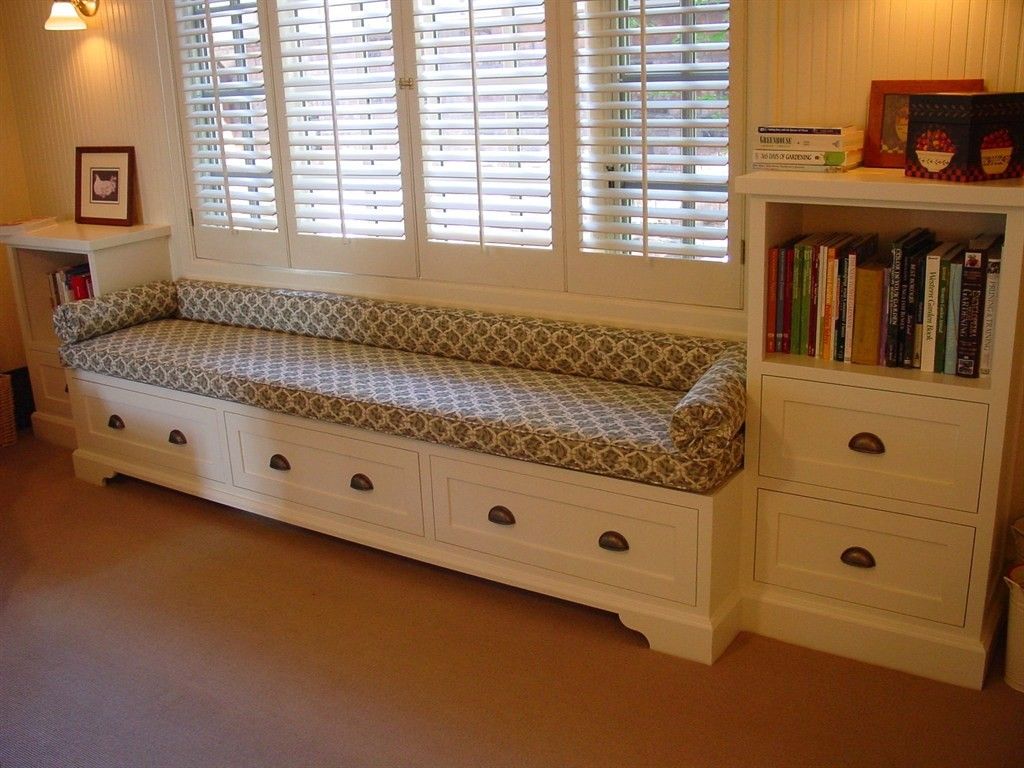
Style and Aesthetics
The style and aesthetics of your built-in bench should align with the overall design of the living room. Consider the architectural style of your home and the existing furniture and décor. A modern living room might benefit from a sleek and minimalist bench, while a traditional living room might call for a more ornate and detailed design. Pay attention to details such as millwork, moldings, and hardware to ensure a cohesive and harmonious look.
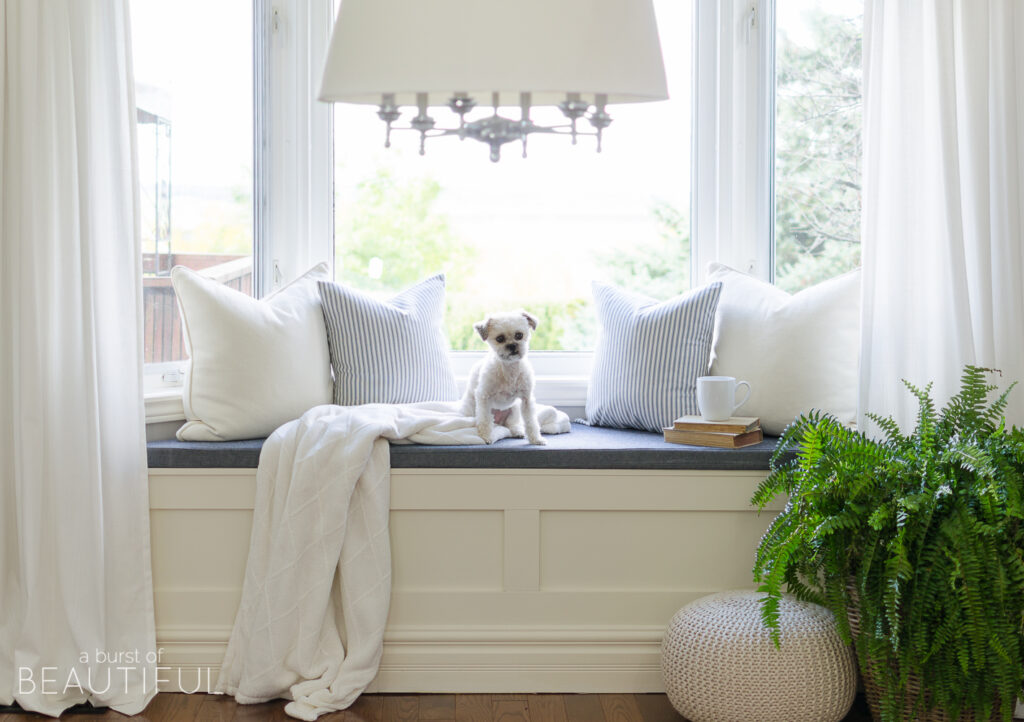
Comfort and Ergonomics
Comfort is paramount when designing a built-in bench. Consider the depth and height of the seat, the angle of the backrest, and the type of cushioning. The seat should be deep enough to allow for comfortable lounging, and the backrest should provide adequate support. Choose high-quality cushions that are both comfortable and durable. Consider adding throw pillows for extra comfort and style.
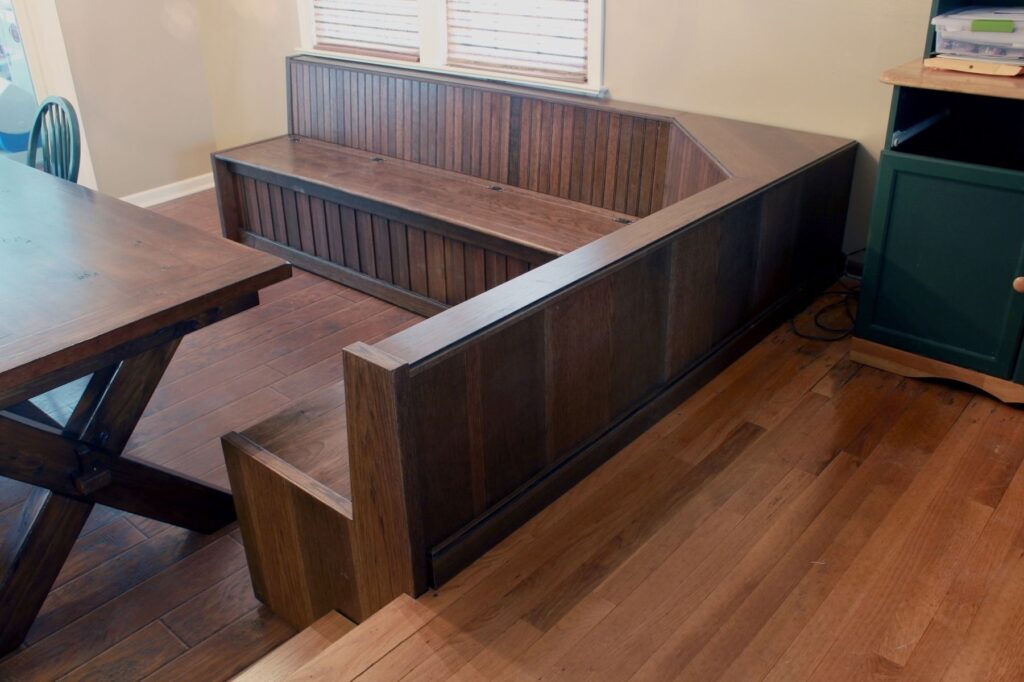
Storage Solutions
If you plan to incorporate storage into your built-in bench, carefully consider the type and configuration of the storage compartments. Lift-up seats are ideal for storing larger items, while drawers are better suited for smaller items. Consider the accessibility of the storage compartments and ensure that they are easy to open and close. Internal dimensions should accommodate what you plan to store inside. Also consider safety mechanisms to keep from slamming shut.
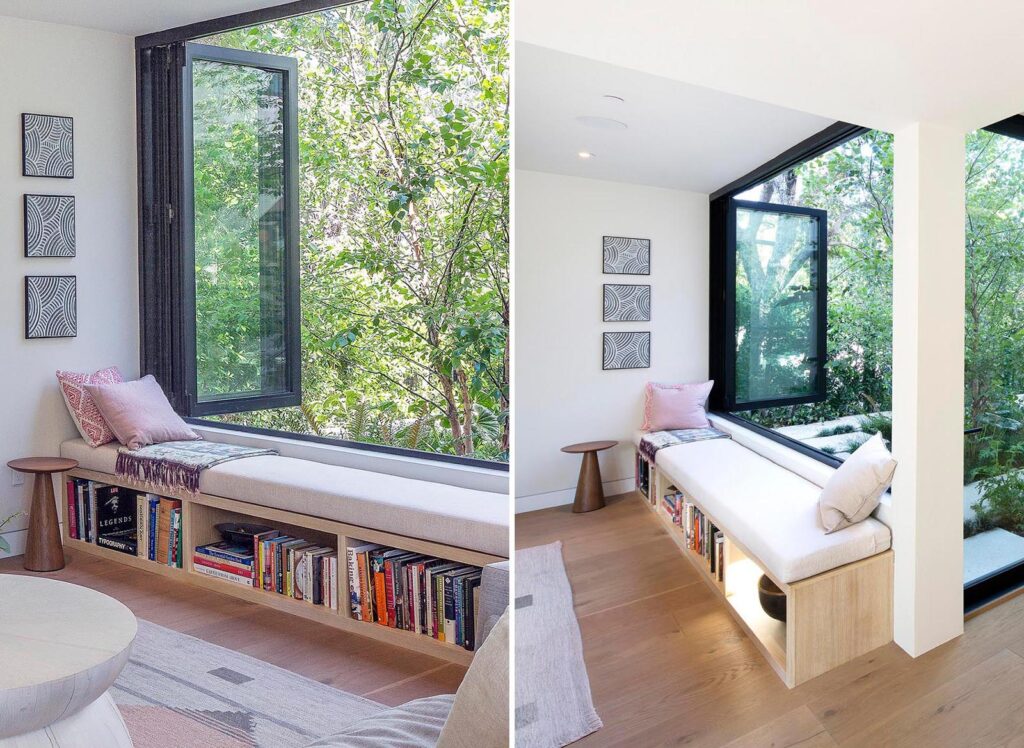
Lighting
Lighting can play a crucial role in enhancing the ambiance and functionality of your built-in bench. Consider adding task lighting for reading or ambient lighting for creating a cozy atmosphere. Sconces, pendant lights, or even recessed lighting can be used to illuminate the bench area. Position the lights strategically to avoid glare and provide adequate illumination for the intended use of the bench.
DIY vs. Professional Installation
One of the biggest decisions you’ll face when planning a built-in bench is whether to tackle the project yourself or hire a professional contractor. Both options have their pros and cons, and the best choice for you will depend on your skills, experience, budget, and time constraints.
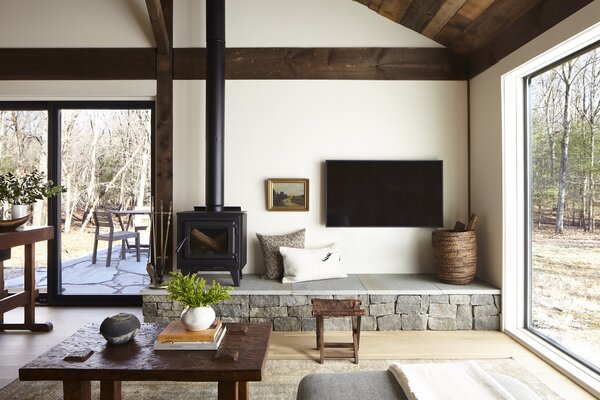
DIY Advantages
- Cost Savings: DIY projects can save you a significant amount of money on labor costs.
- Control: You have complete control over every aspect of the project, from the design to the materials.
- Personal Satisfaction: Completing a DIY project can be incredibly rewarding and provide a sense of accomplishment.
DIY Disadvantages
- Time Commitment: DIY projects can be time-consuming, especially if you’re not experienced.
- Skill Requirements: You’ll need to have a certain level of carpentry, woodworking, and construction skills.
- Potential for Errors: Mistakes can be costly and time-consuming to fix.
Professional Installation Advantages
- Expertise and Experience: Professional contractors have the knowledge and experience to ensure that the project is done correctly and efficiently.
- Quality Workmanship: You can expect a high level of quality and attention to detail.
- Time Savings: Professional contractors can complete the project much faster than you could on your own.
Professional Installation Disadvantages
- Higher Cost: Hiring a professional contractor can be expensive.
- Less Control: You’ll have less control over the project and will need to rely on the contractor’s expertise.
- Finding a Reputable Contractor: It’s essential to find a reputable and reliable contractor to ensure a positive experience.
If you have strong carpentry skills, ample time, and a tight budget, a DIY approach may be the right choice for you. However, if you lack the necessary skills, are short on time, or prioritize quality workmanship, hiring a professional contractor is the best option. Always get multiple quotes from different contractors and check their references before making a decision.
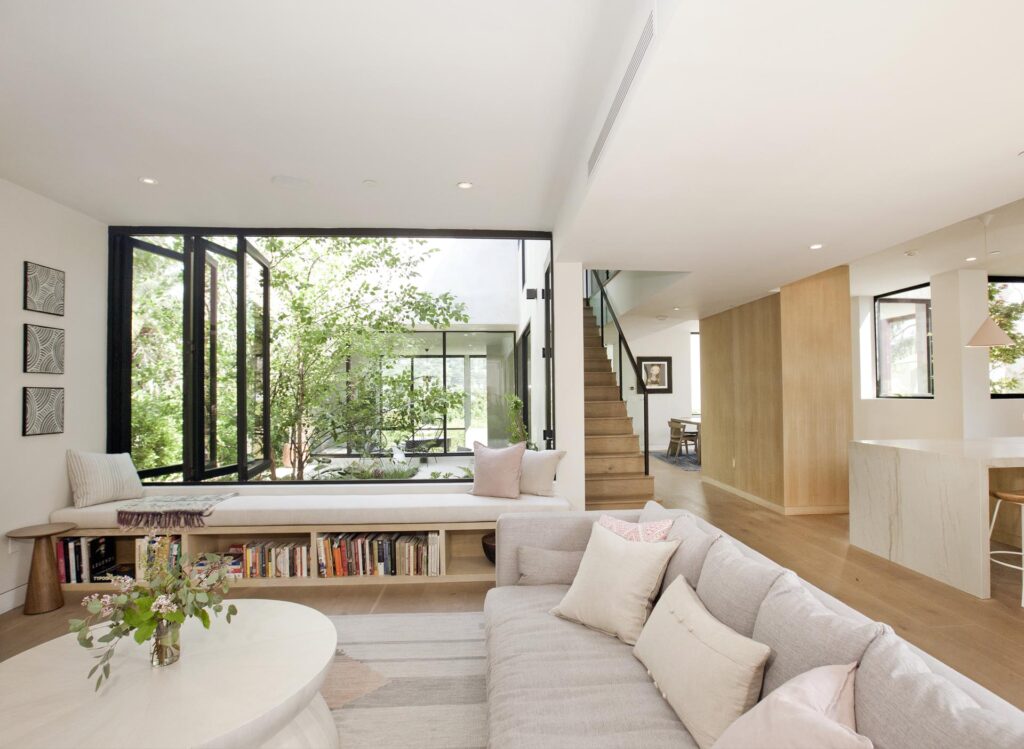
Decorating Your Built-In Bench
Once your built-in bench is installed, the real fun begins: decorating it! This is your chance to personalize the space and make it truly your own. Here are some tips for decorating your built-in bench:
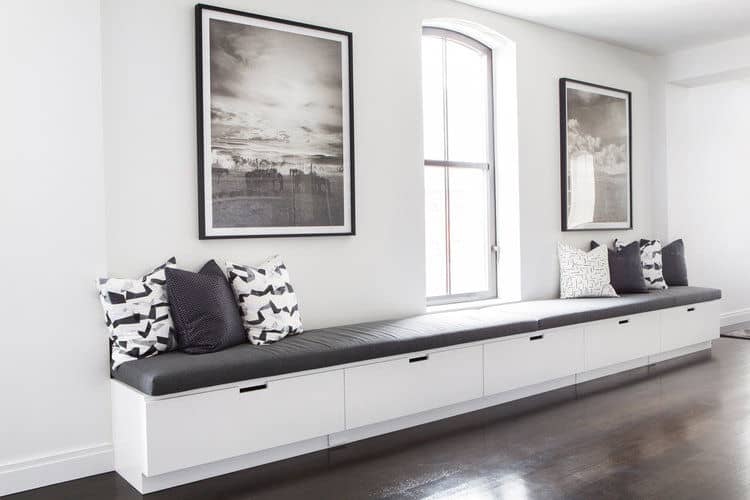
Cushions and Pillows
Cushions and pillows are essential for creating a comfortable and inviting seating area. Choose cushions that are the right size and thickness for the bench and select pillows that complement the overall décor. Mix and match different colors, patterns, and textures to add visual interest. Consider using a variety of pillow sizes and shapes to create a more dynamic look.
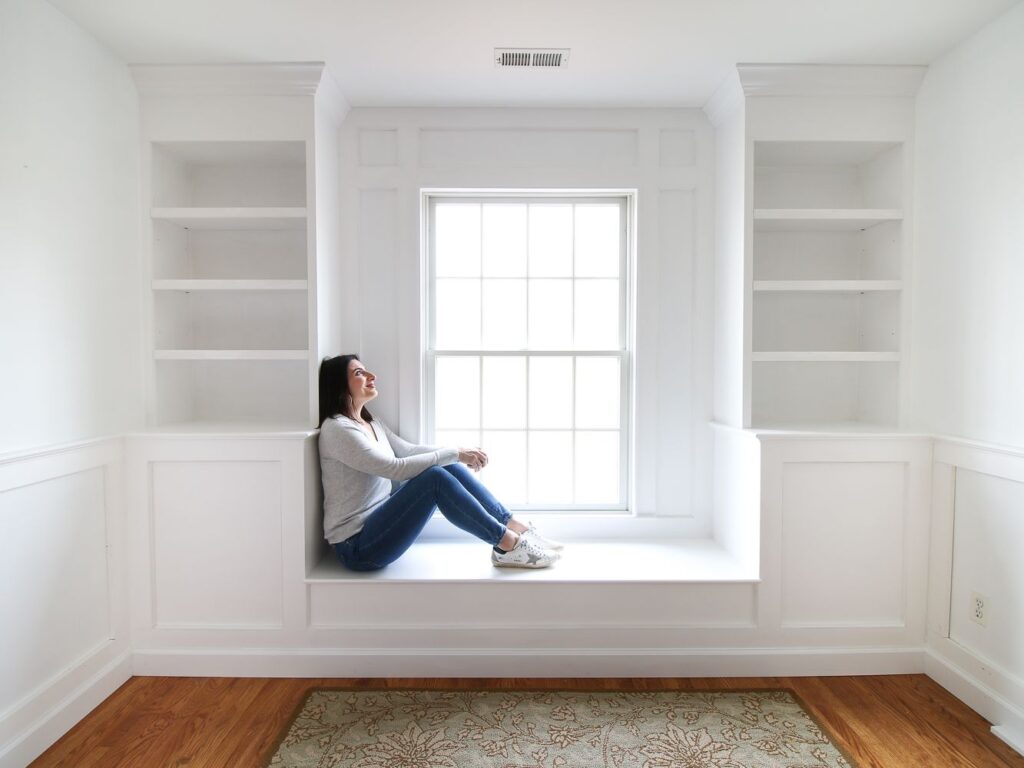
Throws and Blankets
Throws and blankets are perfect for adding warmth and coziness to your built-in bench. Drape a soft blanket over the back of the bench or fold it neatly on the seat. Choose throws and blankets that are made from comfortable and luxurious materials, such as wool, cashmere, or faux fur. Consider using a variety of textures to add depth and dimension.
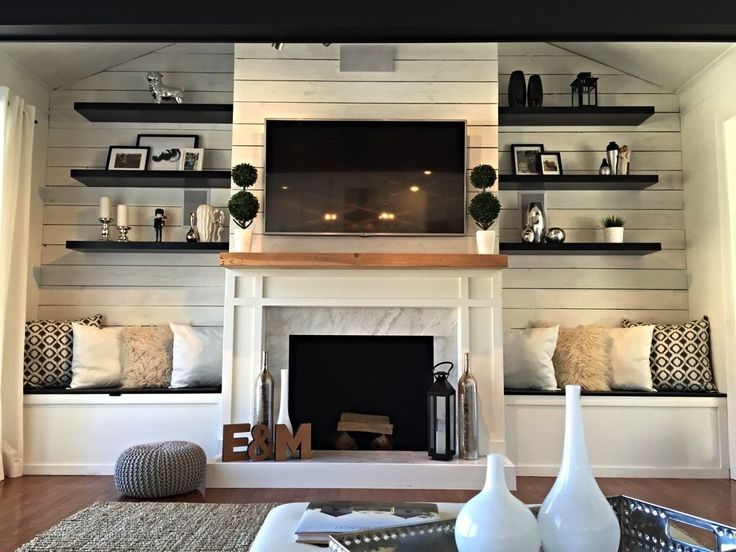
Area Rugs
An area rug can help to define the seating area and ground the built-in bench. Choose a rug that is the right size and shape for the space and that complements the overall décor. Consider using a rug with a bold pattern or vibrant colors to add visual interest. Make sure the rug is comfortable to walk on and that it doesn’t slip or slide.
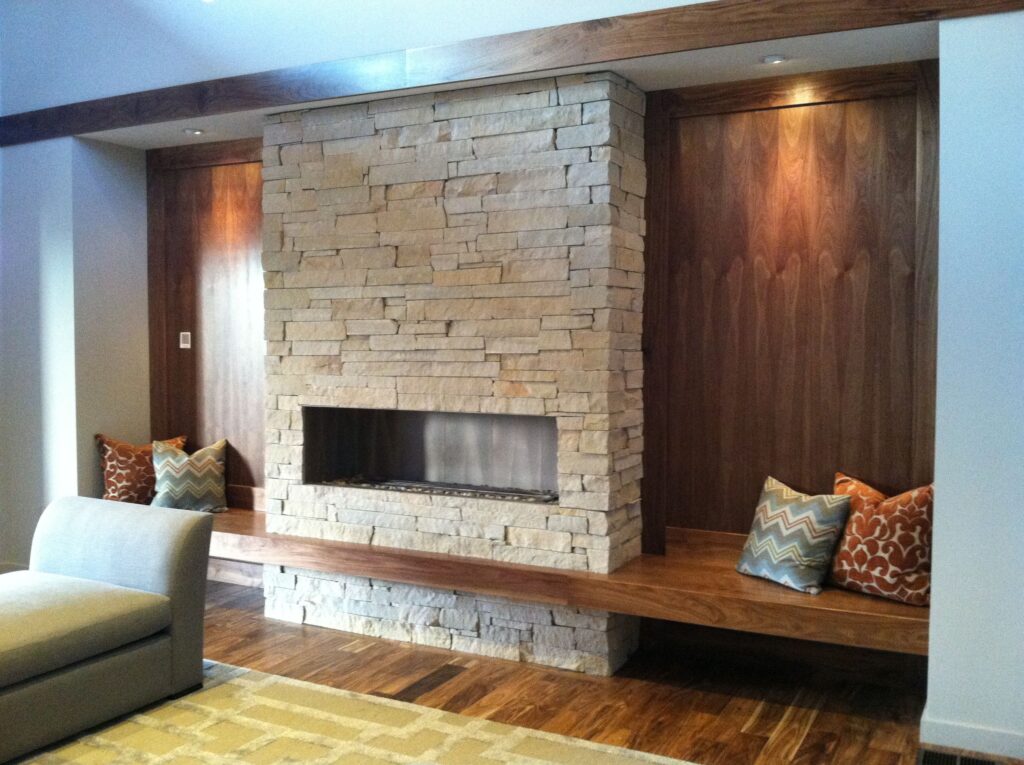
Lighting Fixtures
Lighting fixtures can enhance the ambiance and functionality of your built-in bench. Consider adding a sconce or pendant light above the bench for reading or a table lamp on a nearby side table for ambient lighting. Choose lighting fixtures that are the right style and scale for the space and that complement the overall décor. Experiment with different types of bulbs to create the desired mood.
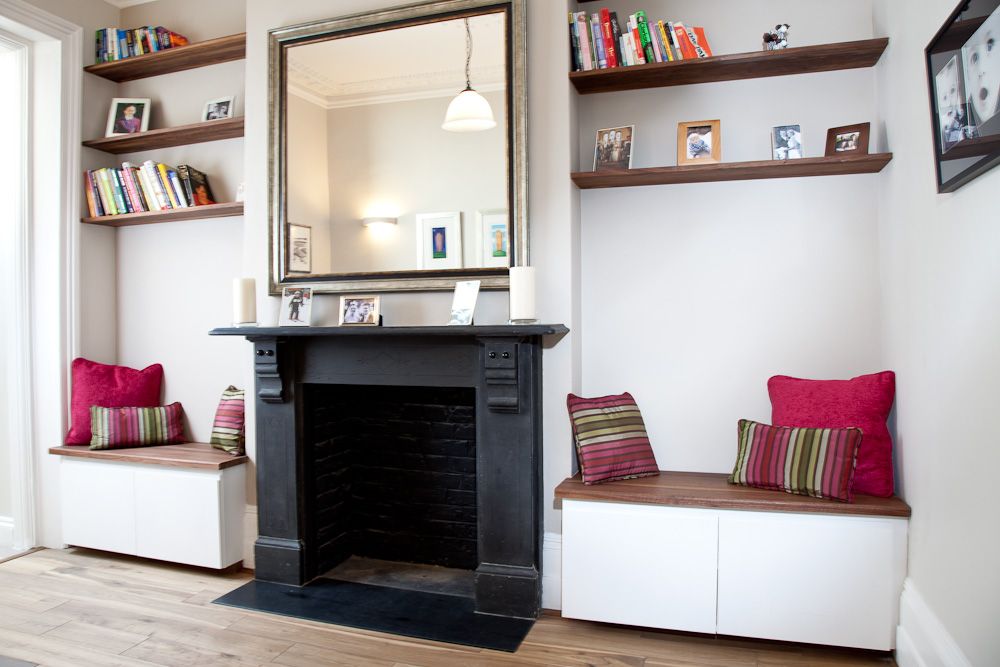
Greenery and Plants
Greenery and plants can add life and freshness to your built-in bench area. Place a potted plant on the bench or hang a trailing plant from the ceiling. Choose plants that are easy to care for and that thrive in the existing lighting conditions. Consider using a variety of plant sizes and shapes to create a more dynamic look.
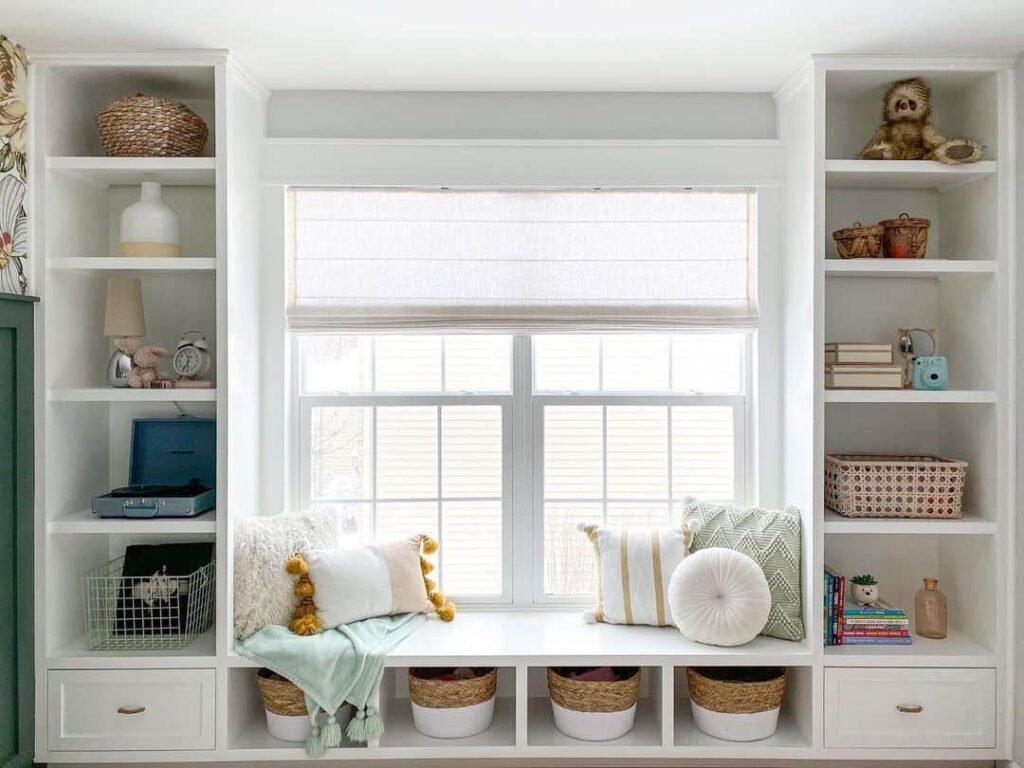
Decorative Objects
Decorative objects can add personality and character to your built-in bench. Display your favorite books, artwork, or collectibles on the bench or on nearby shelves. Choose objects that are meaningful to you and that reflect your personal style. Arrange the objects in a visually appealing way, using a variety of heights and textures.
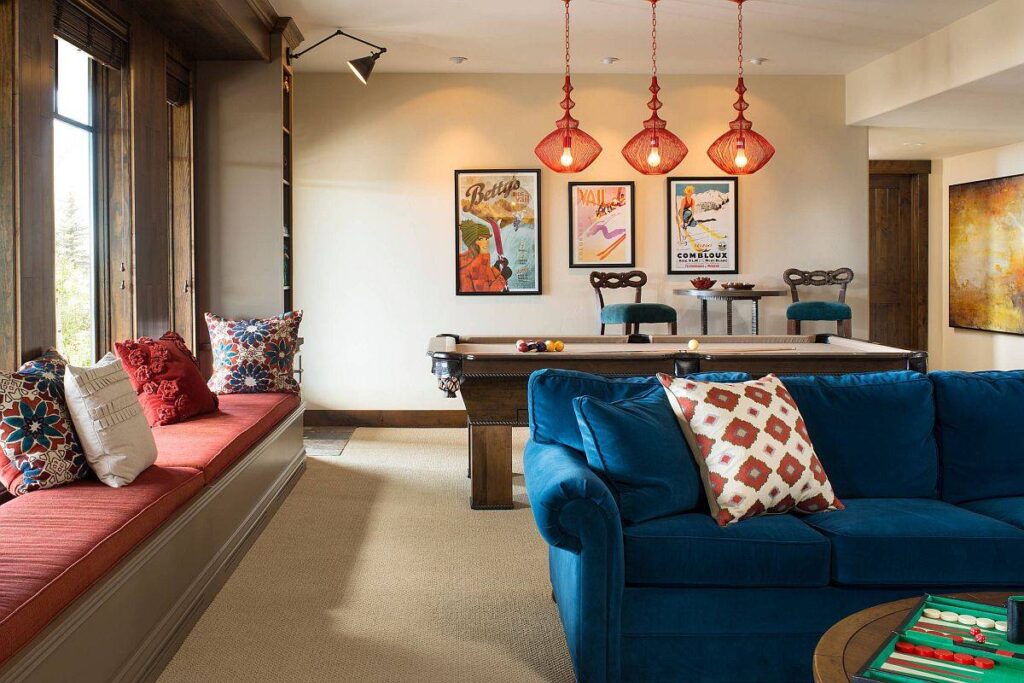
Maintaining Your Built-In Bench
To keep your built-in bench looking its best for years to come, it’s essential to follow a regular maintenance routine.
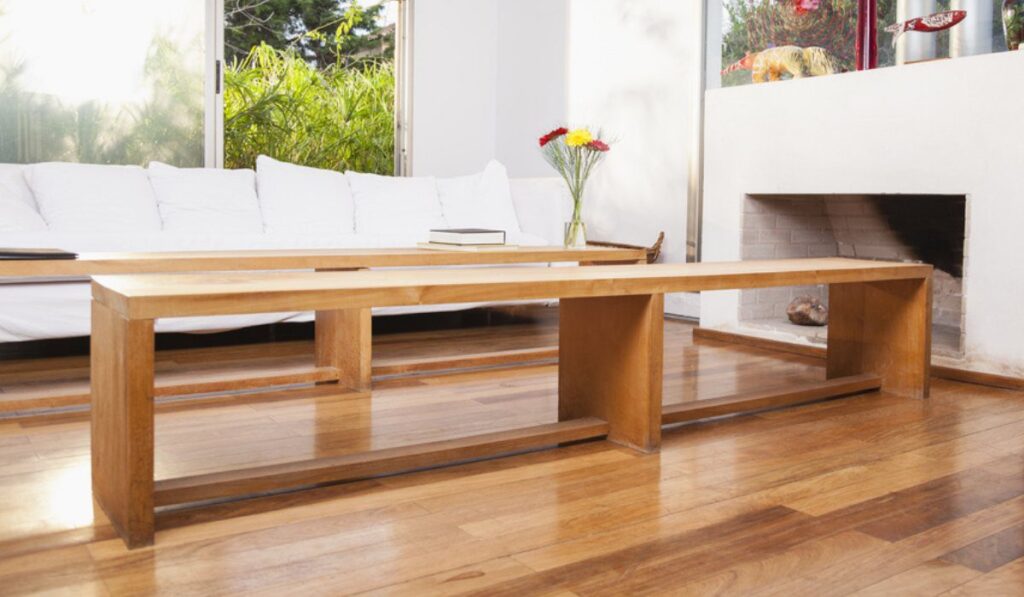
Cleaning
Clean the bench regularly to remove dust, dirt, and spills. Use a soft cloth or vacuum cleaner with a brush attachment to clean the surface of the bench. For spills, blot them up immediately with a clean cloth. Avoid using harsh chemicals or abrasive cleaners, as they can damage the finish.
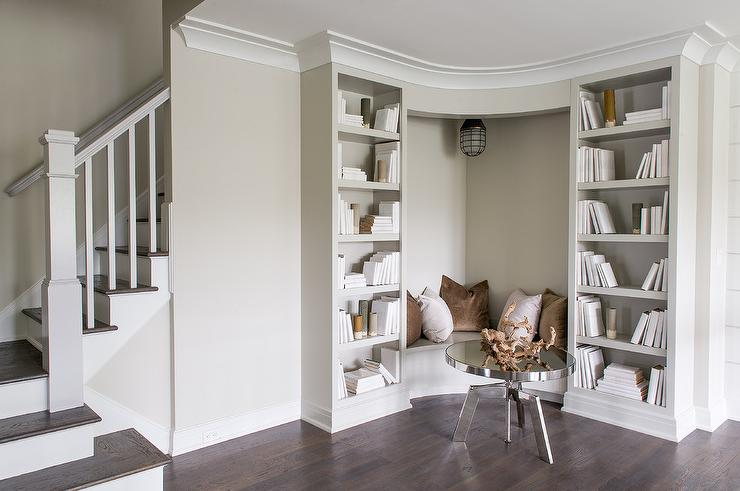
Upholstery Care
If your built-in bench is upholstered, follow the manufacturer’s instructions for cleaning and care. Regularly vacuum the upholstery to remove dust and dirt. For stains, use a mild detergent and water. Avoid using harsh chemicals or solvents. Consider having the upholstery professionally cleaned every year or two.
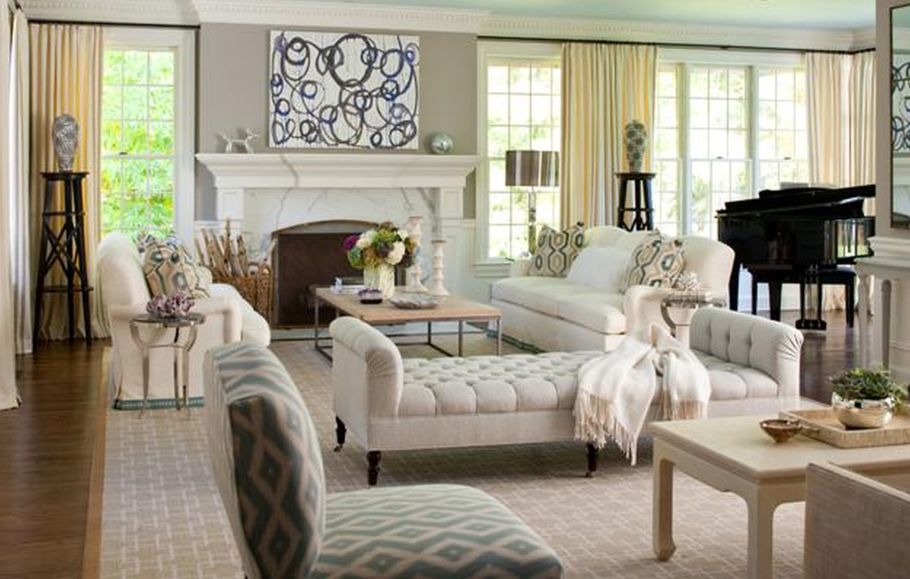
Wood Care
If your built-in bench is made of wood, protect it from moisture and sunlight. Apply a sealant or varnish to the wood to protect it from scratches and stains. Regularly dust the wood to remove dirt and grime. Avoid placing hot objects directly on the wood surface.
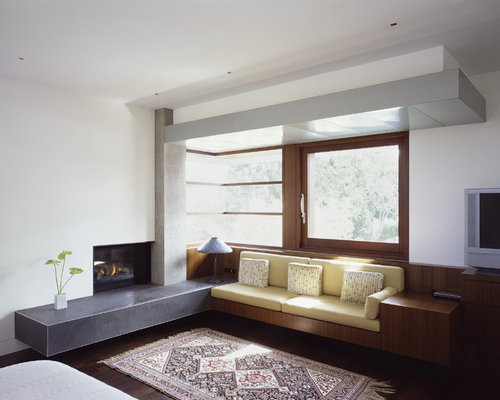
Hardware Maintenance
Check the hardware on the bench regularly and tighten any loose screws or bolts. Lubricate the hinges and slides on storage compartments to ensure smooth operation. Replace any damaged or worn hardware.
Conclusion: Elevate Your Living Room with a Built-In Bench
A built-in bench is a versatile and stylish addition to any living room. It offers a multitude of benefits, including maximizing space, creating a cohesive design, adding character, and enhancing comfort. Whether you opt for a classic window seat, a space-saving corner bench, or a functional storage bench, a built-in bench can transform your living room into a haven of relaxation and style. By carefully considering the design factors, choosing the right materials, and following a regular maintenance routine, you can enjoy the beauty and functionality of your built-in bench for years to come. So, embrace the trend and elevate your living room with a custom-designed built-in bench – you won’t be disappointed!
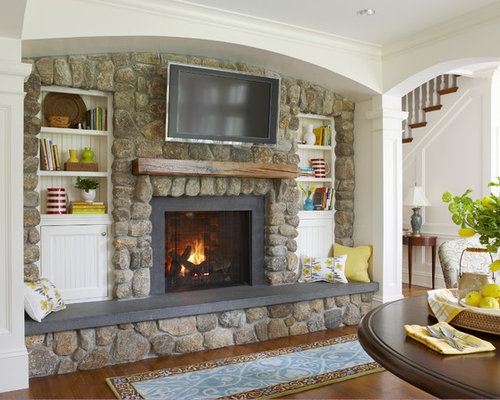
 Nimila
Nimila
